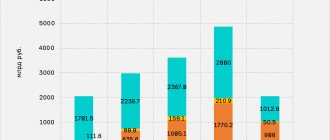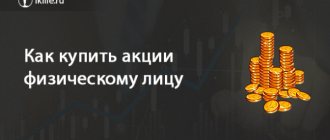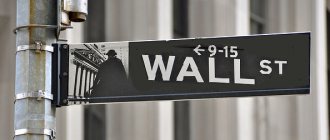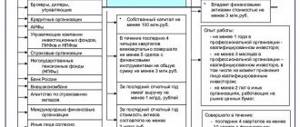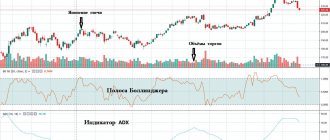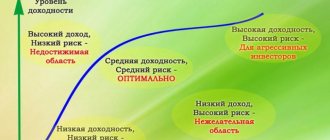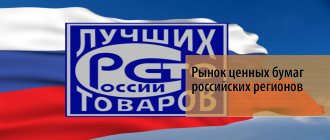A child of two or three years old who goes shopping with his mother already understands that any product is purchased for money. As the baby grows, he realizes the value of money and understands that a lot depends on it. The presence or absence of money in the family determines whether they will buy him a beautiful toy or clothes, or whether he will go to the sea with his parents in the summer.
School-age children may already be interested in questions about how money arose, what kind of money people used before, how Russian money differs from money in other countries.
Our material contains a selection of interesting facts about money that you can please a curious child with.
№1
Today we are all accustomed to the fact that we have fairly convenient and light paper money, but before everything was different. Ivory, cattle, pieces of gold, silver, copper, etc. were used as means of payment.
The first paper money appeared only in 740 BC, in China, during the reign of the Tang Dynasty. The idea of paper money arose because coins were becoming too heavy and were inconvenient to carry around with you all the time.
The introduction of paper money into China benefited everyone: it was lightweight, could be set in different denominations, and required less effort to make than coins.
"Outstanding" money
1. The most popular bills in the world are 100 US dollar bills.
2. With the most unusual name - Venetian coins of the 16th century - “newspapers”. This was before the advent of newspapers as print media. There is even an opinion that newspapers in the familiar sense got their name because they had to be paid for with one such coin.
3. The world's largest public banknote : a Malaysian banknote issued 4 years ago, 37 centimeters long and 22 centimeters wide. Entered the Guinness Book of Records.
4. The most original material for money : red porcelain (money was made from it in Saxony 100 years ago), pieces of mammoth bones (collectible coins were made in Africa in a limited edition) and seal skin. “Seal” money, by the way, was issued in Russia, Alaska, in the 19th century. About 40 copies have survived.
5. Coins of the most unusual shape - Somali - in the form of cars, motorcycles, musical instruments.
6. With the strangest image : Belarusian 50-ruble banknote from 1992. There was an American baribal bear on it, which, by the way, is not found in Belarus.
7. Another Guinness record related to money was set by Queen Elizabeth II. Her portrait is depicted on banknotes of more than 35 countries.
8. The heaviest coin, also the most expensive : Australian, with the profile of Elizabeth the Second. Weighs more than a kilogram.
9. The smallest coin is the Indian silver quarter (about 2 grams). Long out of circulation.
10. The most beautiful - with the image of an endemic butterfly, released in 2011 in Cameroon.
№7
It may sound funny, but some banknotes have more germs on them than a toilet lid.
If we talk about Bank of Russia Tickets, then 50-ruble banknotes are considered the dirtiest. Scientists have identified 34 types of pathogenic microorganisms on the surface of these banknotes.
If we talk about American dollars, the most dangerous and contaminated banknote is 1 dollar.
Therefore, you need to wash your hands regularly after touching banknotes.
Curious and funny facts about money for children
1. American cents are able to repel slugs due to their composition, as they shock them.
2. In ancient China, coins were carried in bundles on strings. A pack of 100 coins was called "one cash". Hence the name "cash".
3. The lifespan of a coin can exceed 30 years, but a fragile one-dollar bill “lives” on average only a year and a half. Small money is used more often than large ones, so the lower the denomination of the banknote, the faster it will wear out.
4. On average, one banknote passes through the hands of 30–50 thousand people.
5. In 1997, the regime of dictator Joseph Mobutu was overthrown in the Republic of Congo. After that, they decided to simply cut out his image from the banknotes. Thus, the new money had a hole where Mobutu's face should have been.
6. Pocahontas (not only a Disney cartoon heroine, but also a real-life Indian princess who lived at the turn of the 16th and 17th centuries) was the first woman whose image appeared on US dollars. This happened in the 1860s.
7. There are now more than 170 currencies in the world. Moreover, only 8% of the currency is real money. The rest is just numbers in bank accounts.
8. Banknotes have more bacteria on them than public toilet seats. This is partly why you need to regularly wash your hands with soap. Plastic money accumulates less paper bacteria, and it also lasts longer. They are actively used in Vietnam, Australia and other countries.
9. Rich drug lord Pablo Escobar, hiding in the mountains from the FBI with his family, burned $2 million overnight just to keep his loved ones warm by the fire.
10. Money, contrary to the famous proverb, smells. Dogs at airports have been trained to detect the scent of paper and special ink - they can sniff out those illegally transporting a lot of cash.
11. Every year, more toy money is printed for the game Monopoly than real money.
№12
What do you think is the value of the bills and coins in your wallet? Of course, the same as shown on the banknote, right? Not certainly in that way. Roughly speaking, today's money has no value. This is ordinary colored “paper”. It is valuable only because we trust the state to tell us that money has a value. It was different before. Since the mid-19th century, many countries around the world have applied the so-called gold standard. That is, it was allowed to issue only such a number of banknotes that covered gold reserves or government bonds. That is, each banknote had a real value.
Interesting facts about Russian money
1. The Russian state did not have its own mints for a long time. Therefore, coins made in other countries were in use in Rus'. The first coins in Rus' appeared under the Prince of Kiev Vladimir the Saint (late 10th - early 11th century).
2. “Zlatnik” was the name of the oldest Russian coin. It's not hard to guess why - it was made of gold. Archaeologists have so far discovered only 11 zlatniks.
3. The word “money” began to be used under Dmitry Donskoy in the 14th century. It is believed that it came from the Turkic "tenge". By the way, this is exactly what the currency in Kazakhstan is called to this day.
4. And the word “kopek” appeared under Ivan the Terrible. Under him, they began to issue coins on which this king (according to other sources - not he, but St. George the Victorious) pierced the serpent with a spear. This money began to be called “kopeck money”. True, there is another version: the origin of the word “kopek” is associated with the verb “to save”.
5. Previously, different principalities in Rus' had their own coins.
6. The ruble is a currency that is used not only in Russia, but also in Belarus.
7. In Rus', small coins were popularly called “scales.” They were made from silver rods.
8. The smallest Russian coin was issued in 1700. It was copper and equal to one third of a penny. A year later, the issue of this coin was discontinued due to unprofitability.
9. In 1825, the abdication of the Russian throne became the reason for the reissue of the coin. The fact is that when Emperor Alexander the First died, his brother Constantine was supposed to ascend the throne. Even before his expected coronation, several copies of the ruble were created with the image of the new emperor. However, it later became known that Constantine abdicated the throne. I had to melt down the coins. By the way, 17 years ago, a rare surviving ruble with Constantine was sold for 550 thousand dollars.
10. The largest and heaviest coin of Tsarist Russia weighed more than one and a half kilograms and measured almost 19 by 19 centimeters. Minted from copper under Catherine the First (in 1725-1726).
11. In modern Russia, the largest coin - made of pure gold, with a face value of 50 thousand rubles - was issued in 2010. Her weight is 5 kilograms. There are only 50 such coins in the world, each currently worth more than 19 million rubles.
12. Only Russia minted platinum coins for regular circulation from 1828 to 1845.
The first ATM in the world appeared in 1939
0
Today, there are more than two million ATMs installed in the world, in which every owner of a plastic card can withdraw money, or, conversely, deposit it into a bank account. In addition to the usual places, such as the airport, a large shopping and entertainment center, a couple of devices also operate at the North Pole. The first prototype of the familiar ATM was invented in America in 1939. But plastic cards were invented much later and the first ATM accepted special paper, which was called a voucher. Using the voucher, you could withdraw a limited, very small amount. The safety of the funds was ensured by the thickness of the walls of one and a half centimeters. In the modern world, the fastest and most convenient way to withdraw cash from bank cards is ATMs.
Who are brokers?
The main employees of the stock exchange are financial intermediaries: brokers and dealers who have licenses to carry out intermediary functions between issuers and investors.
Brokers carry out the instructions of their clients, receiving commissions from completed transactions. They only conduct transactions; the client’s values do not end up in their hands. Money is kept in an exchange account, shares in a depository. Brokers can be individuals or organizations.
People who are directly involved in stock trading are called traders. Participants in securities trading are also often referred to as “bulls” and “bears.” These slang words describe not the role of a participant in exchange trading, but his behavior.
Bulls count on rising prices by buying stocks to sell later.
Bears, on the contrary, count on a fall: they borrow shares in order to sell them now at a higher price, and then, when prices drop, buy them back cheaper, receiving the difference in price. This mechanism is called a short position and allows market participants to profit from understanding where the market is moving, whether it is rising or falling.
The easiest way to track income and expenses is Excel
According to investment expert Oleg Kharitonov, Excel tables provide accounting flexibility. “Very informative, by the way - you can always find out how much and when you bought this or that thing. Especially if there is data for several years. Each month opens its own sheet in the table file. The only thing is that you need to use the double-entry method - take into account the funds in your accounts (there can be a lot of them) and write off expenses by type of expense,” he says.
Read more about this.
Securities
A security is a document of an established form that gives a citizen certain rights to dispose and use specific types of assets.
Securities provide a simplified and prompt transfer of legally established rights to material and other benefits (assets). From an economic point of view, they give the right to part of the ownership of capital and distribution of profits. They are used by commercial entities for their operation and organization (stocks), and can also be credited (bonds). [Note: Stock prices and figures in this article are correct at the time of publication. You can see the current stock prices in a special widget at the end of the text.]
The security has the following characteristics:
• can be the object of legal transactions (negotiability, they can be bought and sold); • contains a list of the rights and obligations of its owner (legal significance, legal requirements); • exercises private rights (for example, the right to participate in the management of society, which is why it is valuable); • is a document that has legal force and public accuracy.
The movement of securities on the market is regulated by the Civil Code of the Russian Federation, the Federal Laws “On Joint Stock Companies” and “On the Securities Market”.
Kinds
In the Civil Code of the Russian Federation there are many types of securities, including deposit and savings certificates, bills of exchange, checks and even a savings book, but we are more interested in such securities as shares and bonds (stock market products).
• Share - secures the owner’s right to receive profit in the joint-stock company, participate in meetings and divide property in the event of liquidation of the company, and pay dividends. But if you buy one share, this does not mean that you can sit in the same office with the board of directors. This opportunity is provided only by a high percentage of shares owned or a controlling stake.
One share equals one vote at a meeting, but one vote is not enough for you to make decisions. The share is endowed with investment opportunities, and any owner has the right to count on income from fluctuations in the share price and the payment of dividends (the size of dividends depends on the number of shares you purchased).
• A bond is a debt security. The owner of which has the right to receive, within a specified period, its nominal value from the issuer (the company that issued the bond). The investor's income depends on the difference between the purchase price of the bond and its redemption price. In other words, a bond is a loan, a source of funds for a company or government. When you buy bonds, you are essentially lending money to the issuer at interest. As usual, such a loan is needed to finance specific programs or facilities.
$100,000 bills were issued in 1934
0
The banknote, whose denomination has five zeros, was issued in 1934. It is difficult to imagine what could be bought with one such banknote at that time. But the reserve fund, which printed and put this bill into circulation, saved Americans from the difficulty of choosing, because it was created exclusively for large government transactions and transactions between banks. It depicted the man who wrote the set of rules of the League of Nations and participated in the signing of the Treaty of Versailles - Woodrow Wilson. The same political and public figure created the Federal Reserve System of the United States.
The first person whose name was placed on a coin was Julius Caesar
0
As Rome conquered more and more lands, becoming the strongest civilization in the world, Roman rulers gained political influence, power and glory, like gods. The Roman Emperor Julius Caesar, then and now known throughout the world, was the first person whose name adorned a coin. In addition to “Caesar”, an elephant was depicted on the coin as a symbol of the emperor. This is another achievement for Caesar. There are many landmarks in memory of this great man, and a coin with his name is one of them.
Fraudsters cut edges off precious metal coins
0
An interesting method of fraud was invented at a time when coins were made exclusively from precious metals. Talented swindlers figured out how to carefully saw off the edges in order to cast new ones from the chips. Isaac Newton put an end to these shenanigans when he came up with the idea of putting a carving called an edge on the edges of coins. This helped to identify clipped coins and catch cunning people by the hand.
